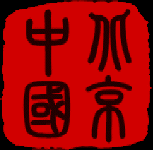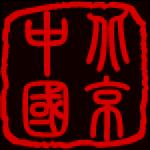 |
BeiHai Park |
 |
 |
BeiHai Park |
 |
The
Circular City
|
 |
 Outside the Circular City. |
During much of its early history, BeiHai Park has been closely associated with its Circular City. The Circular City (TuanCheng) was at the center of the Yuan Dynasty city, then called Dadu. It was originally on one of three islands on the lake but this island was later joined to the land nearby.
From the outside, it in fact looks like a doll-house sized city surrounded by a high wall that is 276 meters long. The wall surrounds a 4.6 meter high platform that partly overlooks Beihai Lake. On this platform are not only halls and pavilions but also centuries-old pines and cypresses. The Circular City occupies an area of 4,553 square meters.
The main structural attraction is the Hall of Receiving Light (ChengGuangDian) whose architecture is extremely elaborate and unique, even in China. It has a square platform in front and a roof of several tiers of flying eaves. All beams and laths of the hall are splendidly painted, with gilded spirals. The roof is covered with yellow glazed tiles and edged with green glazed tiles.
在早期的历史里,北海公园和团城联接的很近,早先团城是北海湖里的三岛之一但后来慢慢和陆地相连。团城是当时的元大都的中心。
从外面看它就像一个玩具屋型号的城堡。是一座砖筑的圆形小城,四周被高4.6米,周长276米的城台环绕,全城面积为4553平方米。站在城台上可看见湖水,台上古木扶疏, 殿堂华丽,是一座精巧别致的小园林。
位于城台中央,是团城的主体建筑物承光殿。他的建筑方式非常的精致特别。其平面呈十字形,前后有方形月台,正中为重檐大殿,殿四面均有单檐卷棚式抱厦,顶覆黄琉璃瓦绿剪边,飞檐翘角,宏丽轩昂。

During the Ming Dynasty, the emperor liked to come here to watch fireworks. It was converted into a Buddhist Hall during the Qing Dynasty.
明代帝、后常来此观烟火,清代改为佛堂,内供白玉佛。
|
 |
In a recess at the rear of ChengGuang Hall is a five foot (1.5m) tall statue of a seated Buddha sculpted from a single piece of pure white jade. Some historians claim that this lustrous relic was imported from Burma during the reign of Emperor Guang Xu, possibly a gift from Burmese monks. The crown and garment are made of gold foil inlaid with red and green gems. Its left arm bears gashes made by swords - a result of the looting by soldiers of the Eight-Power Allied Forces who invaded Beijing in 1900.
Another treasure here is an ancient jar carved from a single piece of black / dark green jade. Measuring 160 cm (4.5 feet) in diameter and 70 cm (two feet) high, and weighing 3.5 tonnes, the jar is carved with aquatic designs over its entire surface - dragons, sea horses and fish are pictured leaping and romping in rolling waves. Records say that the jar was made in 1265. It is believed that the Yuan emperor Kublai Khan (Shi Zu) stored wine in it to celebrate victories in war.
When the palace building that housed the jar collapsed, the jar disappeared and somehow fell into the hands of Taoist priests who used it as a pickling jar. Only when Emperor QianLong began his reconstruction of BeiHai Park was the jar located and returned, to be placed in a pavilion at the center of the Circular City, where it stands today.
Two pine trees in the Circular City deserve attention. One was conferred the title of 'Marquis of Shade' by Emperor QianLong for affording him shade in the heat of summer. Formerly in an umbrella shape, the tree lost two of its branches when they were weighed down by heavy snow in 1959. Props have been placed under all remaining branches.
There is also a white-bark pine that towers 25 meters into the sky. Like the 'marquis', it is about eight hundred years old. Emperor QianLong named this tree the 'White Robed General'.
供于承光殿后厦佛龛内有个白玉佛,用整块白玉雕琢而成,高1.5米,顶冠和袈裟饰金箔,并嵌有红绿晶石。佛像肌肤洁白,色泽清润,神态颐静慈祥。1900年八国联军攻入北京,在抢劫北海公园珍宝时,砍坏玉佛左臂,至今刀迹犹存。
团城上的另一个国宝级的文物是元代用一整块墨玉雕刻而成的“渡山大玉海”又称“玉瓮”。测量直径是160cm(4.5英尺)深70cm(2英尺),重3.5吨,外壁浮雕鱼龙海马出没波涛图案。它造于1265年据说是元世祖忽必烈宴请群臣时以之为贮酒之器,可贮酒三十于石。后来战乱中玉瓮流落到北京西华门外真武庙中,被道人用来腌咸菜。乾隆皇帝知道后,令人以千金购回,并专门在承光殿前建造玉瓮亭置之,直到今天。
在团城也有两个树值得关注。一个是被乾隆皇帝封为“遮荫侯”在承光殿左侧20米高的油松,它是乾隆在炎炎夏日乘凉纳爽的地方。从前是一个伞状的外形,但在1959年的一场大雪后它的两个分枝断了。现在有两个支柱安在剩余的树枝下。
另一棵是白皮古松高25米,像侯爵一样,大约有800多年的树龄了。曾被乾隆皇帝封为“白袍将军”。
 The 'Marquis'. |
 The 'White Robed General'. |
Only small parts of the original Circular City remain today. The plaque tells us of multiple destructive events, the last of which was the invasion by the 8 power european forces in 1900 as a punishment for Chinese assertiveness and emancipation - a reaction to the Boxer Rebellion.
However, the White Buddha that was damaged in that event is still inside the Circular City. Interested visitors can see it on display, together with the ancient dark green jade jar said to have been part of Kublai Khan's court belongings.
现在团城只有一小部分现存到今天。这个牌匾上可以告诉我们很多种关于这里被破坏的事情其中最后一个就是1900年八国联军入侵,这是对于当时中国闭关锁国的一举重创。
然而,白玉佛仍然在团城内它就是在那次事件时遭到的破坏。感兴趣的游客仍然可以看到它和那个墨玉的玉瓮,都是忽必烈留下的财产。
 NEXT : Jade
Island
NEXT : Jade
Island
 Beihai Park Introduction
Beihai Park Introduction
 Beihai Park Videos All ten videos
Beihai Park Videos All ten videos
 Beihai Park Introduction
Beihai Park Introduction
 Layout and Map
Layout and Map
 History
History

South Scenic Area

On the Island
 Jade Island
Jade Island
 YongAn Temple
YongAn Temple
 Pavilion of Benevolent Voice
Pavilion of Benevolent Voice
 The White Dagoba
The White Dagoba
 The Long Corridor
The Long Corridor
 FangShan Restaurant
FangShan Restaurant
 Chamber for Reading the Classics
Chamber for Reading the Classics
 ZhiZhu Hall
ZhiZhu Hall

East Scenic Area

North West Scenic Area
 Peaceful Heart Garden
Peaceful Heart Garden
 Heavenly King Hall
Heavenly King Hall DaCi ZhenRu Hall
DaCi ZhenRu Hall
 The 9 Dragon Screen
The 9 Dragon Screen
 The 5 Dragon Pavilions
The 5 Dragon Pavilions The 5 Dragon Pavilions (2)
The 5 Dragon Pavilions (2)
 ChanFu Temple and Garden
ChanFu Temple and Garden
 The Pavilion of Complete Happiness
The Pavilion of Complete Happiness
 Boating at BeiHai Park
Boating at BeiHai Park

Share this page
China Travel and Culture Videos Home